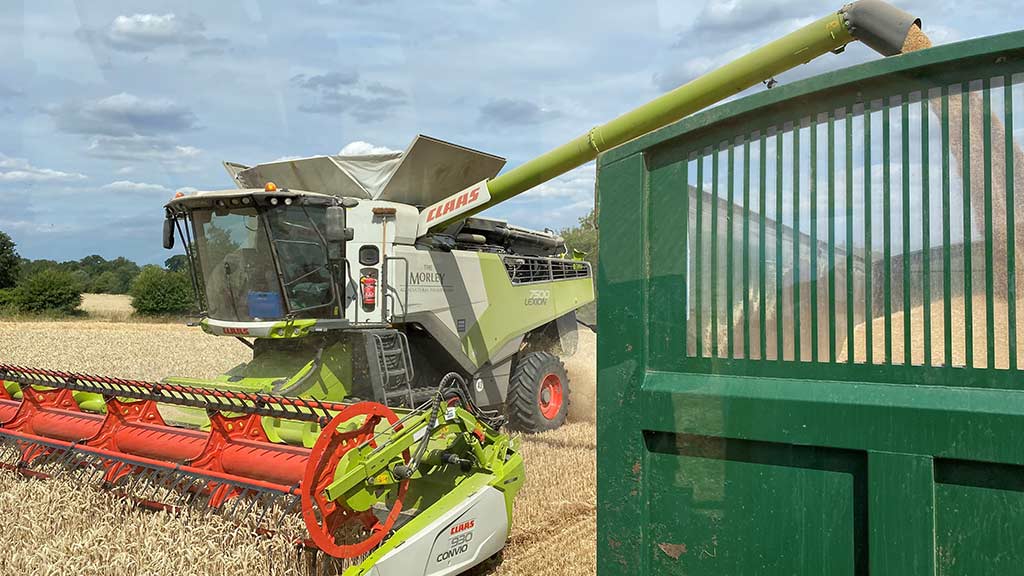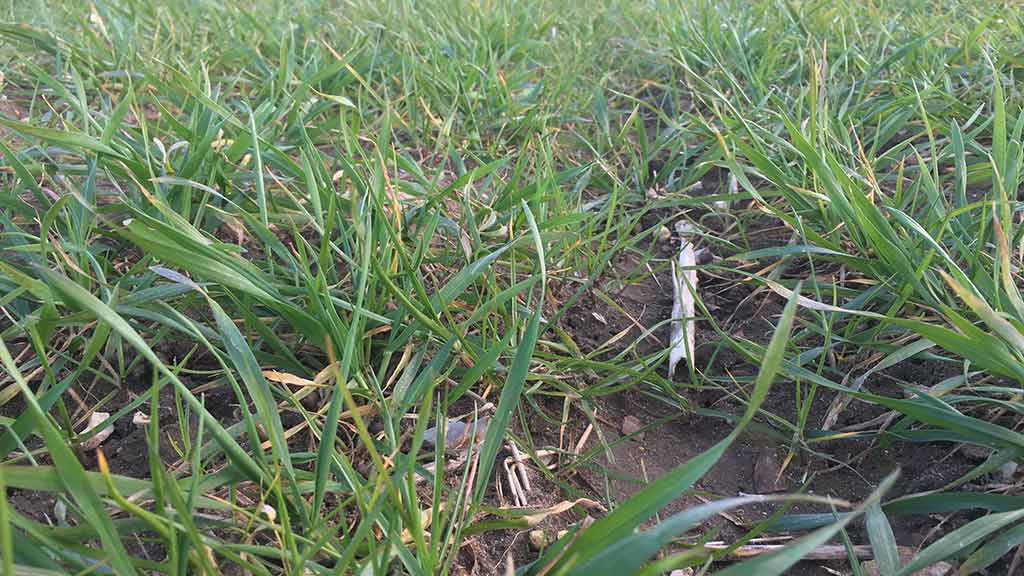What Strategic Farm East project will study at Morley Farms
 © David Jones
© David Jones If you were going to pick the perfect commercial farm to host a significant programme of trials and research, Morley Farms in Norfolk would surely be close to the top of the list.
There aren’t many other farms in the country with more experience of hosting trials and research programmes, giving it a significant advantage in understanding what will be involved.
It also has a huge amount of baseline data that is openly available, and experience in running long-term experiments.
All of which made it an understandable choice to become the second eastern region Strategic Farm for AHDB, following in the footsteps of the Barker brothers’ six-year tenure with their farm near Stowmarket in Suffolk.
See also: 4 key lessons from the first AHDB Cereals Strategic Farm
Morley Farms is the commercial farming arm of The Morley Agricultural Foundation (TMAF), a charity set up about 120 years ago by a group of wealthy landowners to host and facilitate agricultural research, education and training.
Near Wymondham, south-west of Norwich, it is a typical south Norfolk farm, growing winter wheat, winter and spring barley, sugar beet, oats, linseed and rye.
Soil is typically Grade 2 or 3 ranging from “Ashley series” light sandy loam to “Beccles series” medium sandy clay loams.
Most of the land (527ha) is rented from TMAF, but there is also about 147ha rented from the John Innes Centre and another 40ha contract-farmed for local landowners.
The farm hosts more than 7,000 trial plots spread over 30ha, mostly for Niab, the John Innes Centre and the British Beet Research Organisation, as well as some other commercial partners.
Part of the goal of TMAF is to close the gap between academic research and real-world farming, and be a place where farmers can understand how they can change what they do on their own farms from such research, Morley Farms farm manager David Jones explains.
“AHDB has similar aims, wanting to bridge that gap between the science and practical application, so with its resources and our resources hopefully we can achieve much more as a Strategic Farm.”
One improvement David has earmarked is to improve knowledge transfer and adoption of research results on farm.
“It saddens me when there is good evidence from research and farmers haven’t engaged with it,” he says.
“Cover crops is one example – I’ve been growing them for 10 years and, for me, it’s an obvious thing to do, but some growers are still saying they might only now try one, mostly driven by government incentives.
“Yet the evidence is there, so why hasn’t it been engaged with more? Maybe it’s the way the experiments have been done and the way it’s communicated.”
Having seen plenty of research reports during his 15 years at Morley Farms, David is hopeful that with AHDB’s help he can improve dissemination of the results from the Strategic Farm into formats that are easier for farmers and agronomists to understand and put into practice on their farms.
The overall aim for Strategic Farm East is to investigate and demonstrate the transition from farming systems that rely on a cycle of ag chem inputs to a flexible approach combining cultural and conventional management to create solutions that last.
Three areas have been identified by David and the farmer steering group for initial research: Italian ryegrass control, lowering barley yellow dwarf virus (BYDV) risks, and improving nitrogen use efficiency in wheat.

Morley Farms farm manager David Jones © David Jones
Italian ryegrass control
Italian ryegrass patches are becoming increasingly difficult to control in some fields at Morley, David says. “We know what we can do with herbicides with varying degrees of success, especially in cereals.”
The focus is therefore going to be on cultural controls, and understanding what management practices create less favourable environments for the weed, to reduce populations while still allowing good crops to be grown.
One field with a high and relatively even population of Italian ryegrass will be ploughed following sugar beet, and then followed with spring barley.
Herbicide-only programmes will be compared with hybrid treatments of herbicides followed by at least two different mechanical weeders.
One machine is a Bionalan weed cutter sourced from Primewest and costing about £15,000. David says: “It’s a 6m rotary mower that cuts the heads off, leaving them on the field.
“You’re unlikely to cut 100%, but in sugar beet we cut around 75%, which might not fix the problem but could be part of the solution.”
Hoeing will also be evaluated. “I’m a little sceptical,” David admits. “I think it might encourage more growth rather than killing it.”
Treatments and learnings from this trial will be applied in three other fields, where Italian ryegrass and blackgrass are more moderate and patchier, to develop and demonstrate field-scale application of these and other cultural controls.
The role that primary and secondary cultivation equipment plays in spreading weeds over the farm is also being investigated. Soil is going to be removed from the equipment and put in trays to see what grows, David explains.
“Is it a big problem? We don’t know – it might be cleaning equipment needs to be taken seriously, or it might not matter.”
Weed seed germination experiments will also research where seeds are coming from in the soil profile, by taking soil samples from the top 5cm, then the next 5cm, and so on.
“It will be different depending on previous management, but if we do this multiple times, hopefully, it can help make informed decisions on cultivations.”
David hopes the experiments will be easy to replicate on other farms, if the project can demonstrate their value.

© David Jones
Barley yellow dwarf virus control
The second work package will look at combinations of cultural approaches to manage BYDV risk and determine practical strategies to measure and monitor aphid pressure.
“There are times and areas of the country where using an insecticide is probably essential, and others when it is probably unnecessary but used because it is cheap and economically low risk,” David says.
“Environmentally that’s not the right answer. The less insecticide we use the better.”
The Sustainable Farming Incentive no-insecticide payment is offering further incentive to find alternative solutions.
Initial trials will compare BYDV-resistant wheat with a conventional variety in neighbouring fields, and evaluate decision support tools, including a new one developed by Adas and the existing AHDB tool, in tramline trials compared with no treatment and usual farm practice.
These will be used to characterise spread of the disease through measurement of patch sizes and yield loss, and the economics and performance of resistant varieties.
David is also keen to understand the dynamics between aphid populations and predators, especially the interactions between different habitats, such as hedges, trees and other non-cropped areas.
Nutrient use efficiency
The final area of research is looking at improving nutrient use efficiency while maintaining crop performance.
This will make use of existing long-term Morley Soil and Agronomic Monitoring Sites (Sams), a TMAF-funded network of 30 sites of about 150sq m each where detailed soil and agronomic monitoring is conducted.
The sites have been selected for consistency, but include areas of high, low and variable yields.
About eight sites each year, in winter wheat, will be used to measure and demonstrate how management decisions influence nutrient use efficiency.
Tramline-scale comparisons will also be made of the farm standard of soil-applied liquid nitrogen for the final 50kg N/ha being replaced with a slow release, foliar-applied urea fertiliser.